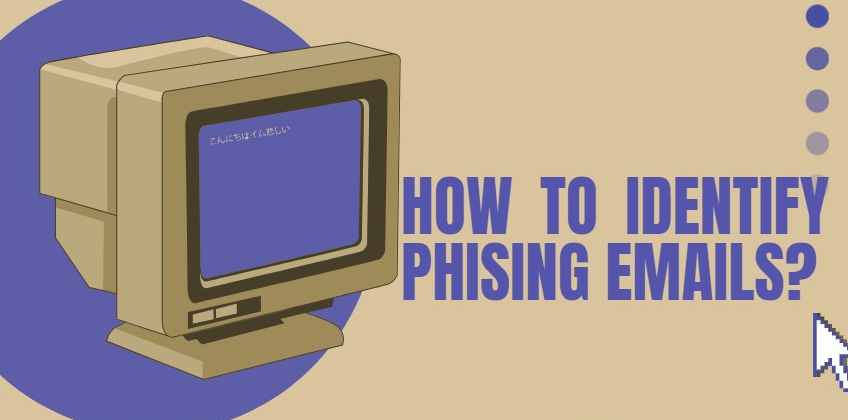Phishing attacks are increasing and are being launched daily. It comes under the top threats which is faced by every organization globally. Phishing emails are fake messages which is made to attract users into a trap by getting the personal and financial information of the users. They usually seem to come from reliable institutions like banks, government agencies, or a reliable company, but it has some dangers that are hidden, like fake links, attachments, and login pages. It becomes very crucial to know how to identify phishing emails to protect yourself from theft and financial loss, and other cyber threats. Through this article, you will get to know every detail regarding how to spot phishing emails.
*How To Analyze Phishing Emails' Headers? *
Let us discuss in brief how to analyze phishing emails' headers. The email header consists of metadata about the path taken by the email from the sender to the recipient, which includes information like the sender’s IP address and much more. By checking headers, we can get to know about all the variations, like unmatched domains, sending to unfamiliar servers. These activities will help in getting to know whether the email has come from a reliable institution or is spam. Now, let us get to know about what are the various ways through which you can identify Phishing emails' headers.
- View the Complete Email Header Open the email on your device and then click on the three dots in that, then select Show Original or something similar to this.
- Display the Email’s Original Header Each server of the email passes through, and it makes an impact. Read the following asks Is this the first server the email came from? Is it matching the domain from which it says it’s from? Does the sender’s IP address look weird? ( For example it from a country like Vietnam, even though the email claims to be from a Canadian government agency?)
- Compare Email Header Fields: From, Return path, and Replied to This has helped me many times in avoiding the scam. If they all match, it is likely to be safe. If the from is “ Brandname.com” but the return path is some unfamiliar Gmail, that is a big red flag.
- Look for Signs of Fake Email Headers To make the email look genuine, the scammers make use of inappropriate details like “ X- X-Mailer: Trusted client” to make the email look real. Or they will pretend that “Microsoft Outlook” has sent it, when they did not.
Advanced Tips For Identifying Phishing Emails
In today’s digital world, phishing attacks have become very common, and it is increasing very quickly. Phishing attacks have become the part of one of the biggest threats to all organizations, whether large or small. Scammers make use of various fraudulent activities to grab the important data of companies and the personal information of users. Let us discuss more about phishing emails to protect the financial and personal data.
New Threats: In this digital world, there are new phishing techniques taking place. Scammers are nowadays using AI to make fake messages, emails, and calls. These scams usually attract individuals and employees into their trap. They make use of various new platforms, like social media apps, to start their campaigns related to phishing campaigns.
Key Trends: Scammers are switching their tricks because of ake news, fast-growing technologies such as AI and deepfake voice. These drastic changes are fooling the users easily.
Organizational Weaknesses: Few og he weaknesses in the organization’s infrastructure, training, and rules and regulations leave organizations exposed to attacks.
Mitigation Strategies: There is a need to improve awareness and implement some security policies; security incidents must be responded to swiftly.
**
What to Do If You Receive a Phishing Email?
**
If you receive a phishing email, do not fall into the trap of the scammer. Handle the situation properly, securely and safely to protect your personal details and financial information. Now, let us know about a few steps that can help you stay safe from these scammers.
Do Not Click any Link: Try to avoid clicking on the messages that seem to come from any spam site or that seem unusual to you. Do not download the attachments for which you do not have any information. Links and attachments will lead you to some websites that belong to scammers.
Avoid Responding: Avoid responding or answering to any emails that looks unusual to you or have a strange behavior, and do not share your details or information with anyone. Follow guidelines; these can help you from falling into a scammer's trap.
Delete Without delay: Make sure to delete the emails that seem to be fraudulent or that are asking for your information through messages. Try to prevent yourself from these frauds or scams.
Report the Email: Report these emails and help others to avoid phishing attempts. Check whether it is reported or not, and if not, try to report it. Make use of the email service’s “Report phishing” feature. Pass that particular email to the company’s IT team, in case it is a work account.
Watch for warning Signs: Phishing emails usually have some warning signals, which can be identified easily. A few of them are grammatical mistakes, spelling errors, which are the same in most of the messages. In that, you can notice the generic greetings like “Dear Customer” in place of the real name.
Conclusion
Learn “how to identify phishing emails”. This is the most important part to protect personal and financial information and to stay safe in this new digital world. Phishing emails usually look identical, but also have some common signs, like strange email addresses, spelling and many more. After focusing on these hints, you can save yourself from falling into the trap of the scammer. If you find any emails with strange behavior, then delete or remove them or do not click on the link or attachments. These warning signals will help people to stay safe and secure from fraud happening online, and will also help in finding or searching fake messages. The user should mainly focus on the links, language, and attachments of the message. This keeps the user's personal information protected from scammers.






Top comments (0)